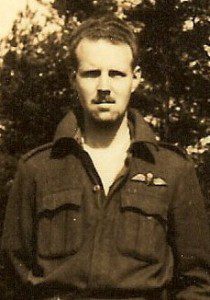
Peacetime commercial artist Robert Buckham had little choice what function he’d fulfill with X Organization. Shot down by a night fighter in April 1943, F/L Buckham at Stalag Luft III was immediately recruited into the forgery section (named after the British travel agency Dean & Dawson) reproducing documents for the coming breakout. He credited the quality of his forgeries to one of his mentors, Canadian artist Arthur Lismer (of The Group of Seven).
“I said I was going to major in art (at Stalag Luft III,)” Buckham said. “And I did.”
The team of Dean & Dawson forgers replicated an entire inventory of documents the escapers would need to travel inconspicuously across Nazi-occupied Europe. Among the forgeries were grey identity cards (Kennkarte) or better, visas (Sichtvermerk), plus a pass (Ausweise), and likely a brown card (Dienstausweise) legally allowing the holder to be on Wehrmacht property.
 In addition, if a POW were disguised as a foreign worker, he would require Polizeitliche Bescheinigung, a police permit authorizing him to be in a specific area; Urlaubsscheine, a yellow paper entitling the holder to be on leave to get there; or, Rückkehrscheine, a pink-coloured form that signified a worker was legally en route to his home country.
In addition, if a POW were disguised as a foreign worker, he would require Polizeitliche Bescheinigung, a police permit authorizing him to be in a specific area; Urlaubsscheine, a yellow paper entitling the holder to be on leave to get there; or, Rückkehrscheine, a pink-coloured form that signified a worker was legally en route to his home country.
Buckham worked in a team of more than 100 artists and calligraphers under Tim Walenn and Tony Pengelly delivering credible reproductions of documents they hoped would convince authorities outside the POW camp their holders were legitimate travellers.
Buckham worked in a team of more than 100 artists and calligraphers under Tim Walenn and Tony Pengelly delivering credible reproductions of documents they hoped would convince authorities outside the POW camp their holders were legitimate travellers.